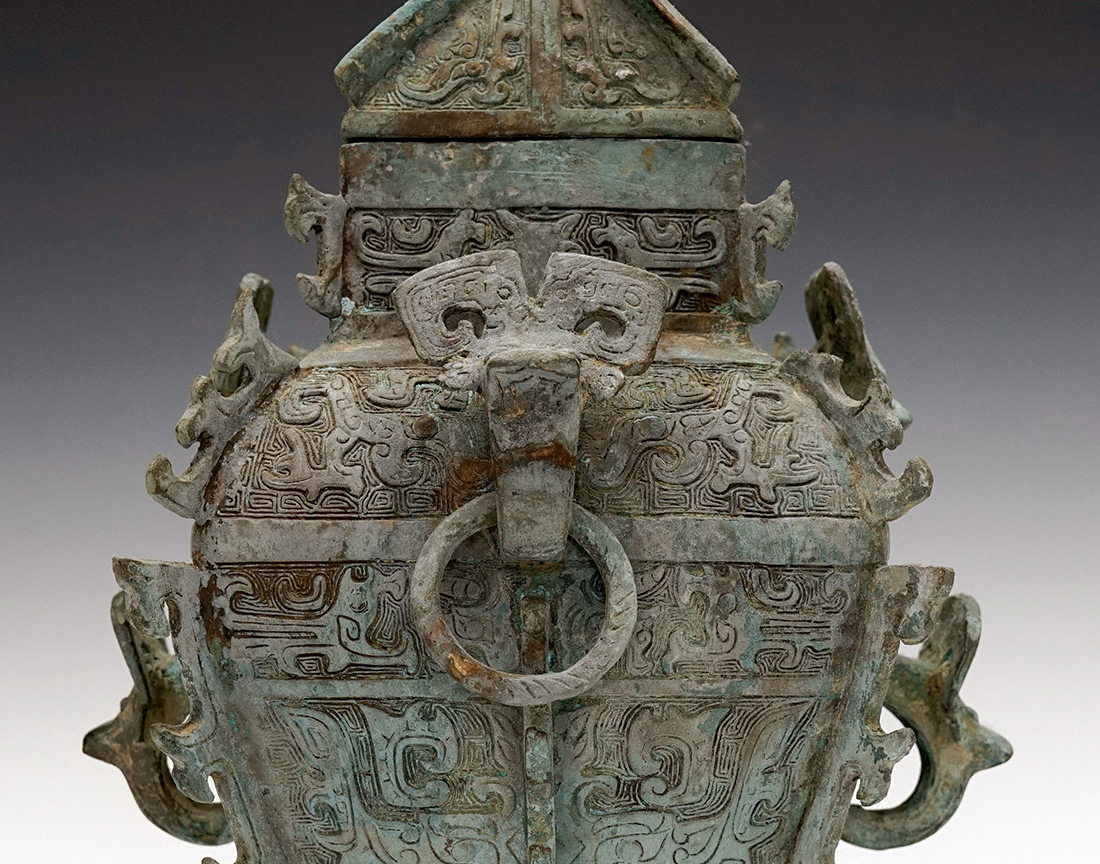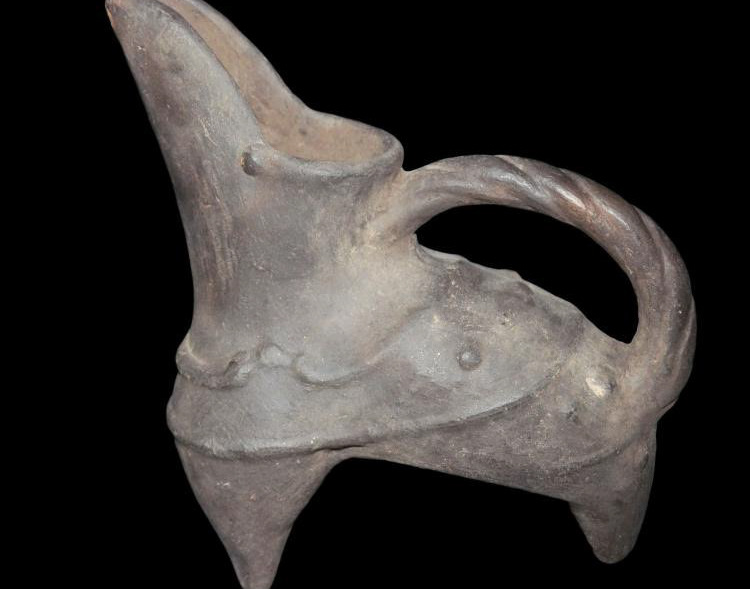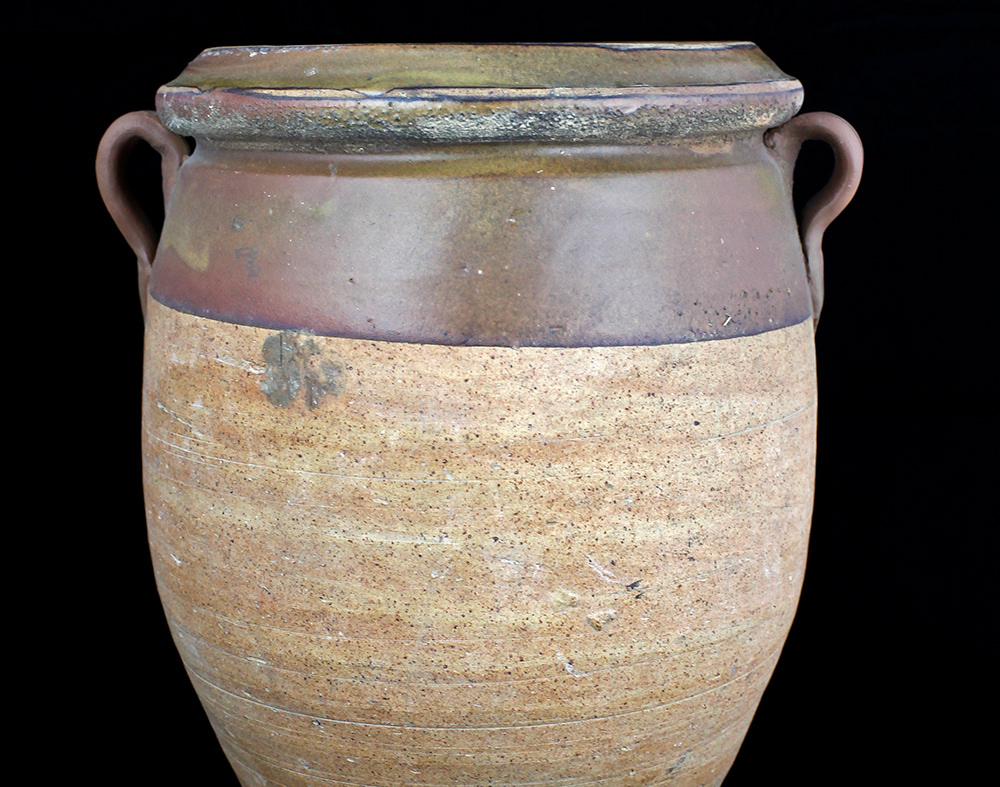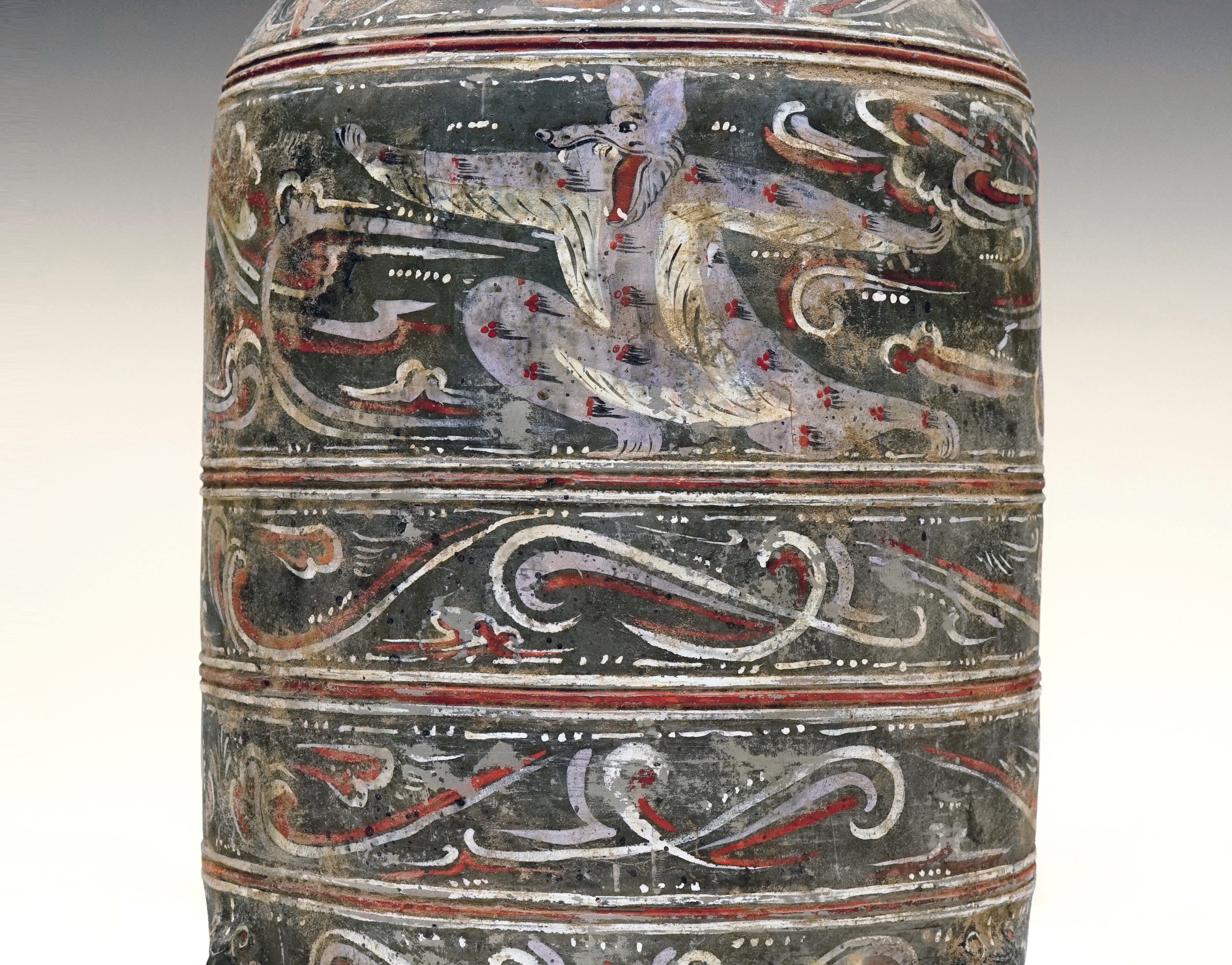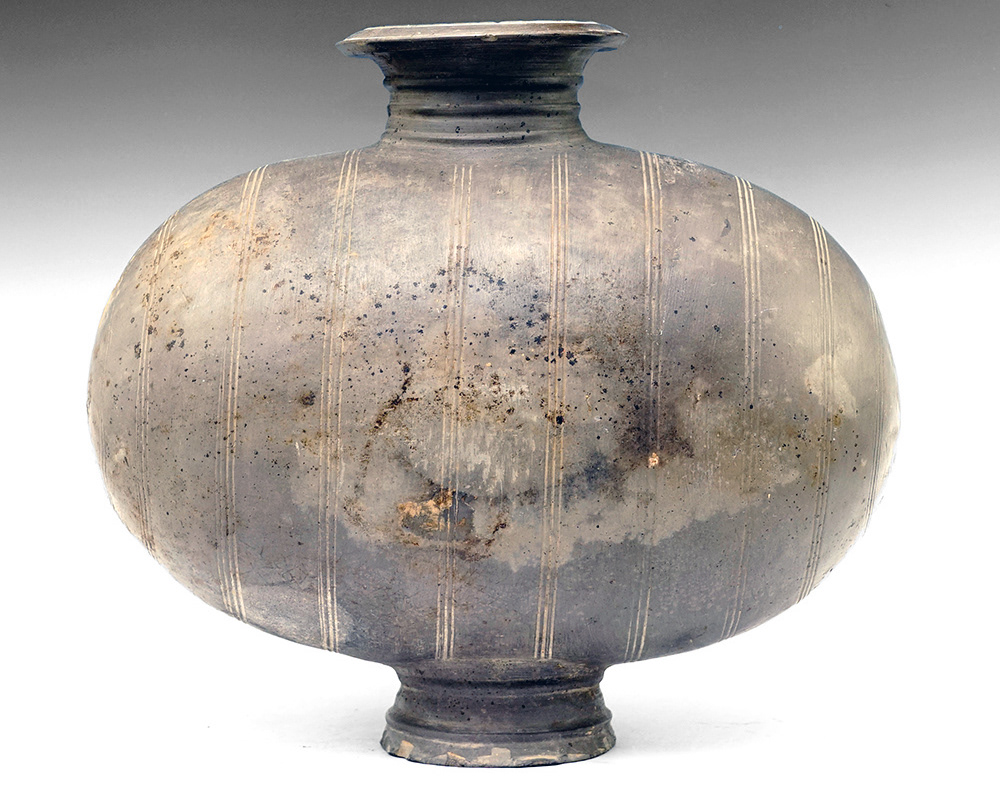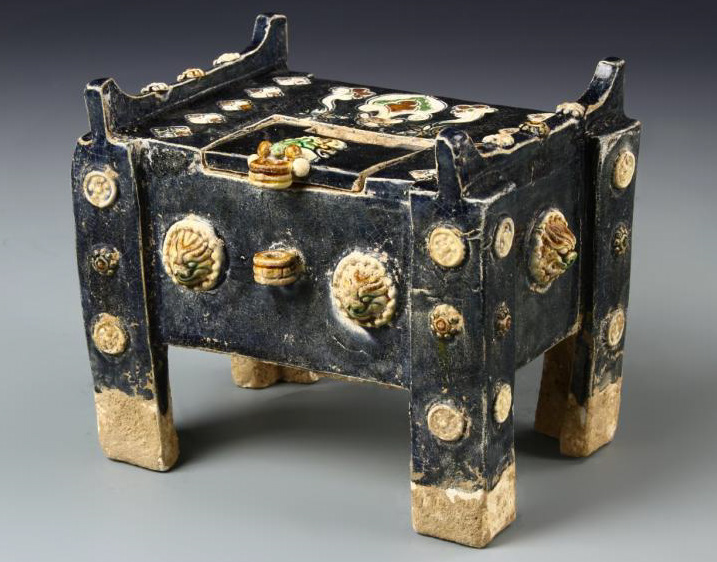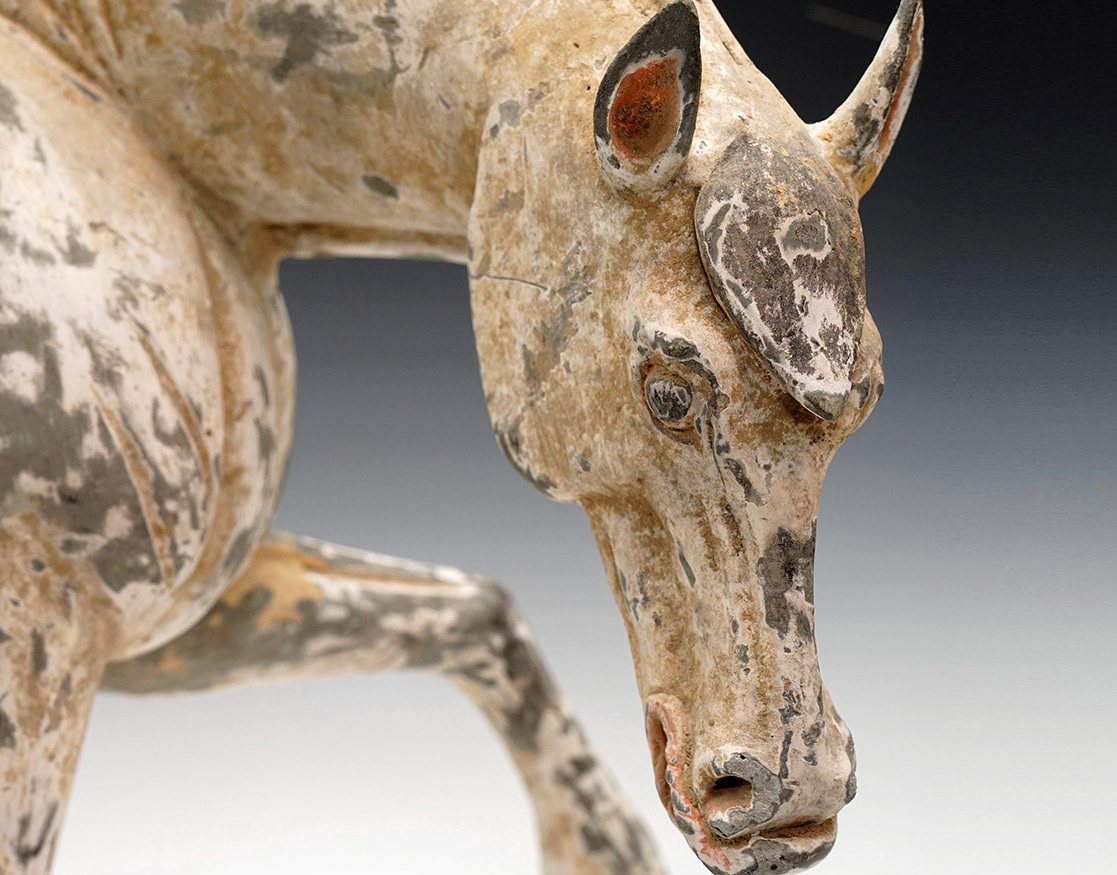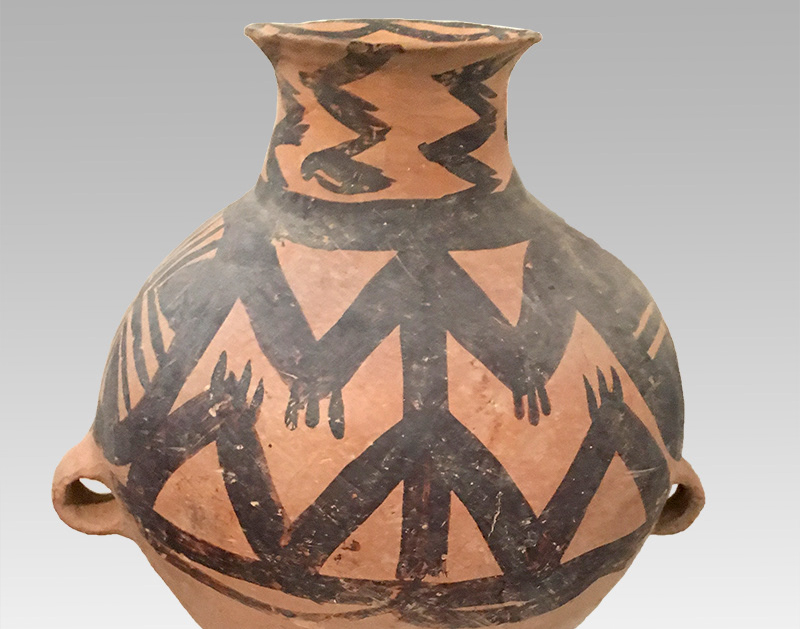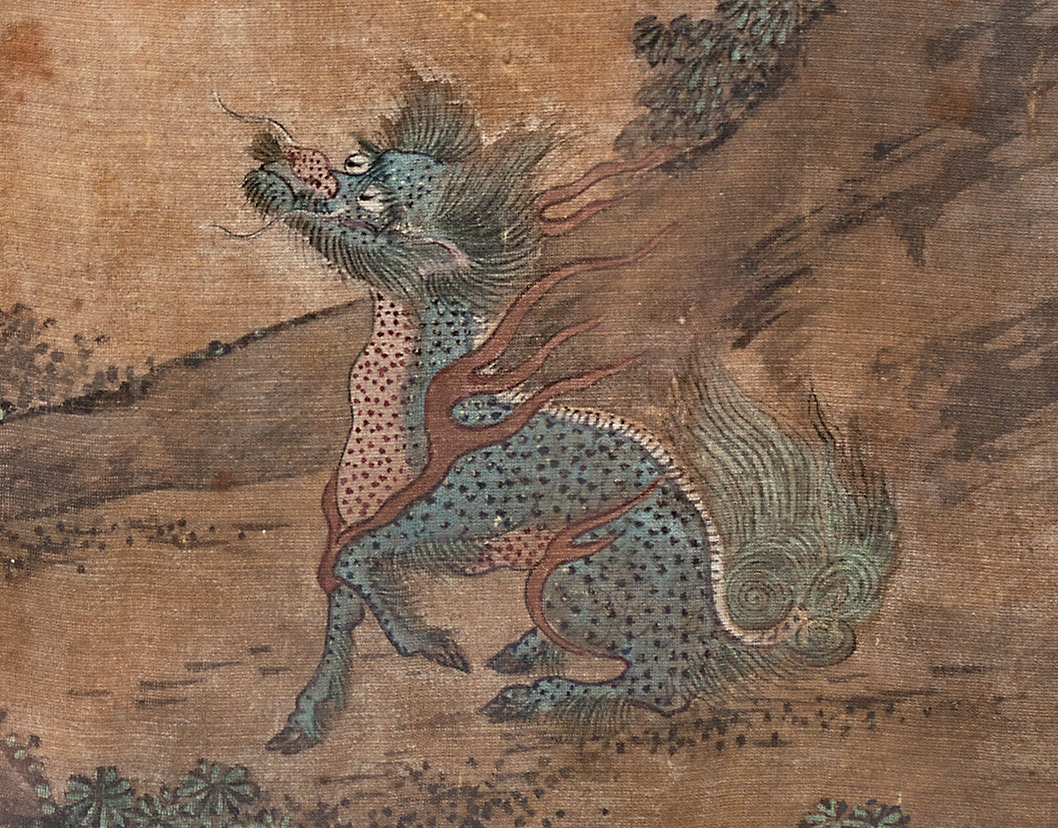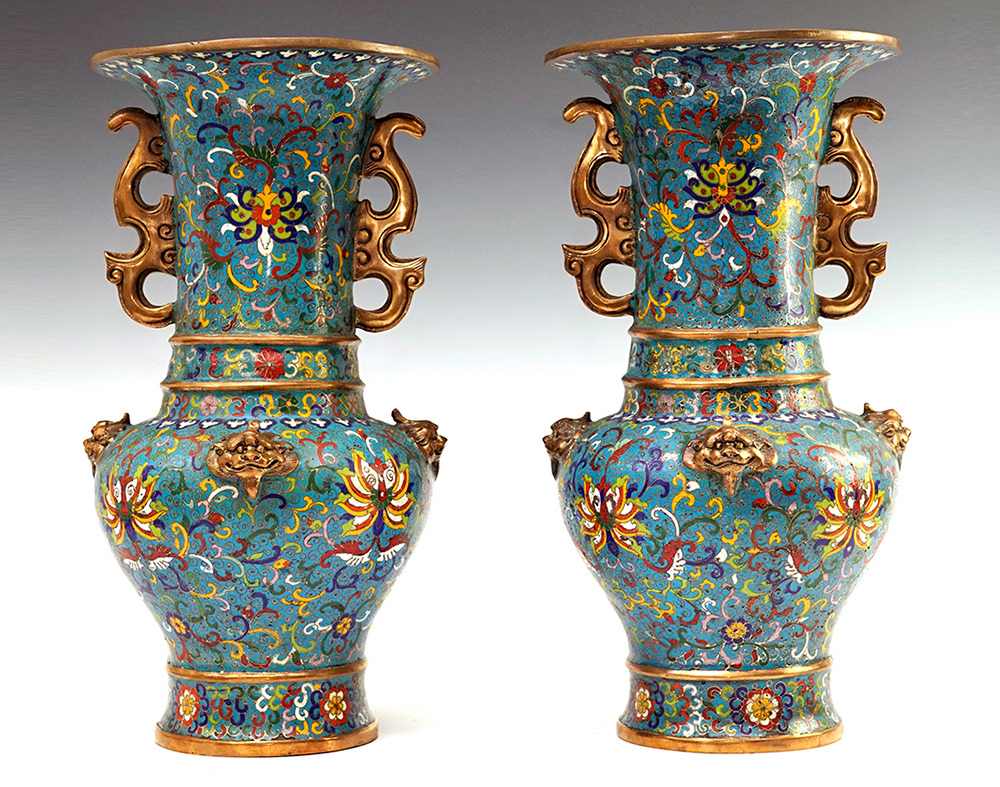

LIAO DYNASTY (907 – 1125) Ceramic shapes of the Liao dynasty (907-1125) generally have their antecedents in the wares of the Five Dynasties (906-960) and Northern Song (960-1127). The long necked vase with an exaggerated tapering body was, however, a purely Liao form. Found in Inner Mongolia and Liaoning Province, these vases are usually glazed in white, yellow, or green and have a simple trumpet -shaped mouth. This phoenix-head vase is a typical hybrid example. It seems that porcelain phoenix-head vases recurrent in South China inspired the bird head shape during the Northern Song dynasty. The basic tall-necked vase peculiar to Liao has been augmented with rudimentary beak, eyes, and feathers as well as with a six-lobed form of the mouth and rilled neck suggestive of a Northern Song phoenix-headed vase. It is a non-functional burial vessel simulating the shape of a ewer. Stoneware with yellow glaze over a white slip 17 in. (43.18 cm.) height PRICE AVAILABLE UPON REQUEST

